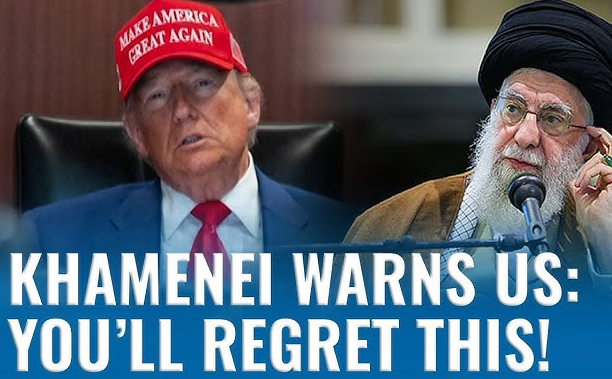Advertisement
In a move that has sent shockwaves from Washington to Tehran, the USA. executed a coordinated military strike on three of Iran’s core nuclear facilities on June 21, 2025. What came next was a ripple effect of tension, debate, and global alarm.
Table of Contents
USA Strike Details: Precision Bunker-Buster Assault
Under the codename “Operation Midnight Hammer,” U.S. B‑2 stealth bombers and Tomahawk missiles targeted Iran’s Fordow, Natanz, and Isfahan nuclear enrichment sites. These underground fortresses were hit by advanced bunker-buster bombs, with President Trump declaring that Iran’s nuclear enrichment capability has been “completely obliterated.”

Trump’s Bold Declaration & Warning
In a televised Oval Office address, President Trump hailed the operation as a triumph of U.S. strength but didn’t stop there. He threatened further strikes if Iran did not comply “immediately,” urging “unconditional surrender” while maintaining a professed openness to diplomacy—should Iran back down.
Divided Government Response
Within the USA.: Supporters praised decisive action, but opponents, including Democrats like Reps. Thomas Massie and Ro Khanna, condemned bypassing Congress and war authorization, with polls showing 60% of Americans opposed to military intervention.
White House staff and military officials kept a cautious tone—emphasizing precision to minimize escalation while bracing for potential retaliation.
Internationally, Britain, France, and NATO allies were informed and urged de-escalation. Meanwhile, the UN Secretary-General warned of a “dangerous escalation,” calling urgently for diplomatic routes to be reopened.
Iran’s Reaction to USA: Posturing, Threats, and Uncertainty
Iran took an official hard line. The Foreign Minister denounced the strike as “barbaric” and a breach of the NPT and UN Charter, vowing retaliation. Supreme Leader Khamenei reportedly took refuge in underground bunkers. Iranian commanders hinted that every American military presence in the Middle East is now a legitimate target.
Regional Fallout After USA-Iran War: Conflict Risk Rises
Iranian Retaliation Paths
Experts warn Iran could respond via ballistic missiles aimed at U.S. bases in Iraq or Syria, or disrupt shipping routes like the Strait of Hormuz, causing global energy reverberations.
Energy & Economic Impact
Oil markets already reacted—Brent crude jumped 7–14%, with anxiety across global energy and financial markets.
Diplomatic Maneuvering
Europe is pushing for renewed Geneva talks, with demands that Iran halt uranium enrichment under inspectors. Yet Israeli strikes and U.S. involvement may have closed that door.
Political Showdown Back Home
U.S. lawmakers, especially Sens. Tim Kaine and Rep. Massie, are preparing War Powers resolutions to reclaim Congress’s prerogative for war decisions. This marks a rising constitutional debate: can a president launch a major military campaign without congressional approval?
What Happens Next? The Moment of Reckoning
- U.S. posture remains “defensive but ready,” with naval, air and ground assets repositioned for potential escalation.
- Diplomatic channels are active—but highly strained.
- Iran’s next move remains the most critical variable: will it retaliate, and if so, how and when?
Our Take
This isn’t just another military strike—it marks the U.S.’s first direct intervention in Israel’s war effort, representing a strategic turning point. Between the threat of Iranian retaliation, political divisions in Washington, and fears over energy and economic fallout, the global stakes couldn’t be higher.
Whether this bold gambit deters Iran or plunges the region into wider conflict hinges on Tehran’s response. One thing is certain: the reverberations from this strike will be felt for years—politically, strategically, and economically.
Advertisement



War